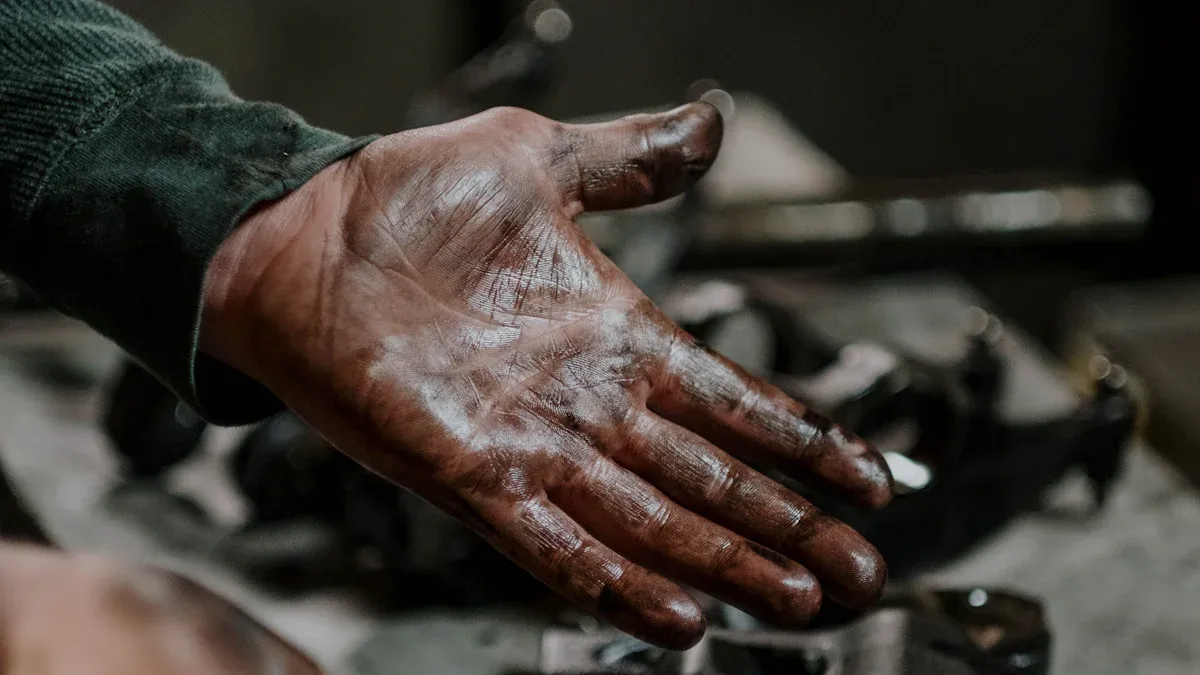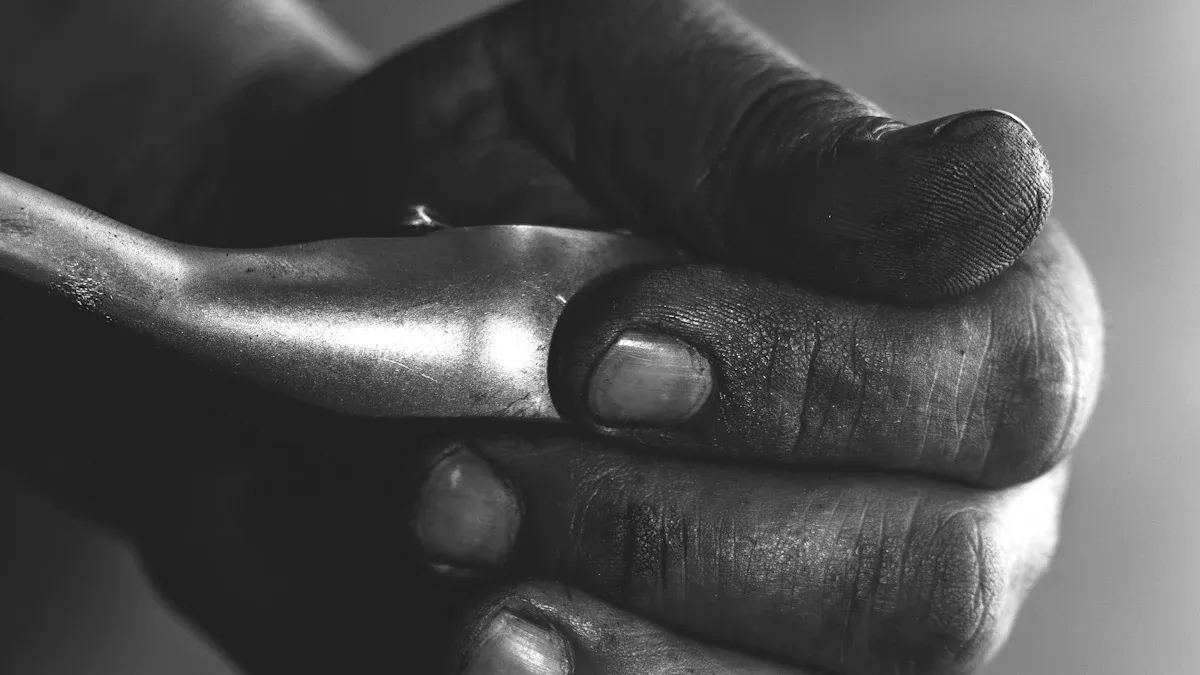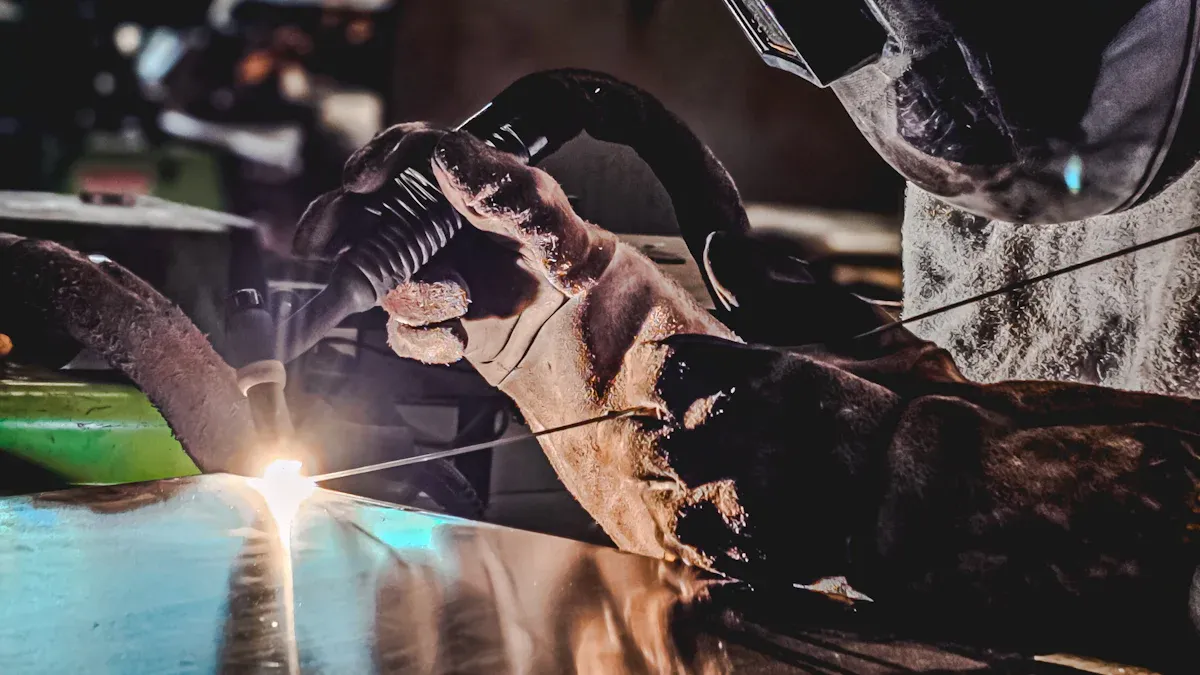
In 2025, many people love vintage bike frame restoration. They enjoy the process and feel proud when they fix old bicycles. This fun journey brings back memories and helps clear the mind. However, finding parts can be a challenge sometimes.
Key Takeaways
Begin your restoration by cleaning the bike frame gently. Use wet rags instead of pouring water to prevent damage.
Pick soft cleaning products like mild soap. Stay away from strong chemicals like oven cleaner to keep the bike’s paint safe.
Use the right tools, like a bike repair stand and a torque wrench. This will make the restoration easier and better.
Cleaning Techniques for Vintage Bike Frame Restoration

Cleaning your vintage bike frame is very important. It is the first step in restoring it. This step helps with everything else that comes next. Let’s look at how to get your frame ready and the best ways to clean it.
Preparing the Frame
Before you clean, you must prepare the frame well. Here are some key steps to take:
Do not use direct water on the bike frame. Use wet rags and wipes instead. This stops water from getting into sensitive spots.
Never spray cleaner directly on the bike. Always put it on the rag first. This helps control how much you use.
Make sure drain holes are clear. Check the bottom bracket, chain stays, and front forks. This helps stop water from building up.
Be careful around decals. Protect them with clear coat or tape if needed to avoid damage.
Tip: Always be careful when using hand tools and chemicals. If you are unsure about the bike’s safety or assembly, ask a professional for help.
Effective Cleaning Methods
Using the right products is important for cleaning. Here are some good cleaning agents that are gentle but work well:
Mild Surfactant: Finish Line’s pink bike wash is great for washing vintage aluminum parts gently.
Alcohol: Use it with a clean rag for extra cleaning after the first wash.
MAAS Metal Polish: This is excellent for polishing steel parts, like chrome steel fenders.
Absolutely do not use oven cleaner! Oven cleaner is very strong. It is made for cleaning burnt food off enamel. It will take the paint off your bike frame.
For hard-to-reach spots, detail brushes are very helpful. Here are some choices:
Old Toothbrushes and Detail Brushes: These work well for cleaning tight areas on bike frames.
E-Z Detail Brush: Users find it easy to clean wheels, especially in small spaces.
Ultrasonic Cleaners: These can give a deep clean when used with the right solution.
Safety Reminder: Always wear protective gear like masks and gloves when using paint strippers and rough materials. Make sure there is good airflow when using chemicals to avoid breathing in harmful fumes.
By using these cleaning techniques, you will keep your vintage bike frame safe. You will also be ready for a successful restoration journey.
Recommended Products and Tools

When you restore your vintage bike frame, the right products and tools are very important. Here’s a helpful list of cleaning supplies and tools for restoration that you should think about.
Cleaning Supplies
Using the right cleaning supplies helps keep your bike looking good without hurting it. Here’s a table of some cleaning supplies that experts recommend:
Cleaning Supply/Method | Description/Usage |
|---|---|
Meguire’s paint cleaner | Freshens paint when needed. |
Mineral spirits | Solvent for taking apart and cleaning bike parts. |
Dawn direct foam dish detergent | Works well with hot water and a toothbrush. |
WD-40 | Gentle cleaner for surfaces. |
NevrDull | Great for cleaning chrome and alloy parts. |
Cloth rags, old toothbrush, Q-tips | Useful tools for cleaning and detailing. |
Restoration Tools
Now, let’s look at the important tools you need for restoring your bike. Good tools can save you time and effort. Here are some must-have tools:
Bike Repair Stand: This keeps your bike steady while you work.
Torque Wrench: This helps you tighten bolts correctly.
Allen Wrench Set: A handy tool for adjusting different parts.
Paint Stripper: Use this carefully to take off old paint without hurting the frame.
Sandpaper and Files: These are important for smoothing rough edges before repainting.
Using high-quality tools can give you better results. They usually work better and last longer than regular tools. This means you’ll get good results that can improve your bike’s value and performance.
By having these recommended products and tools, you’ll be ready for a successful vintage bike restoration. Happy restoring!
Restoration Process
Restoring a vintage bike frame is a fun adventure. But it needs careful attention to details. You should follow a clear process to get the best results. Let’s look at the main steps in the restoration process.
Assessing Frame Condition
Before you start restoring, check the frame’s condition. This step is very important. It helps you find any problems that need fixing. Here are some things experts check when looking at a vintage bike frame:
Description | |
|---|---|
Cleaning | First, clean the bike well to remove dirt and see the surfaces underneath. |
Testing Paintwork | Use soft materials to test paint areas without hurting original features. |
Evaluating Originality | Check how original the parts are and the bike’s history. |
While you check the frame, look for common problems. You might see cracks, broken spokes, or rust. For example, if you find a cracked downtube, you may need to replace it or add a sleeve inside to keep the bike looking original. Remember, different metals react differently to rust. Aluminum doesn’t rust like steel, but it can still look old if left outside.
Repairing and Repainting
After checking the frame, it’s time to repair and repaint. Start by taking the bike apart down to the frame. This step is key for a full restoration. Here are some tips to help you:
Research what materials and tools you need before starting.
Use emery cloth and wet-dry sandpaper in different grades to remove paint.
Use brass brushes to avoid scratching the steel frame.
Stay away from harsh chemicals; choose eco-friendly options instead.
Use a Dremel for hard-to-reach spots, but use hand tools for bigger areas.
After stripping the frame, sand it down for better paint sticking. When you paint, use long strokes and keep the spray can far away to avoid drips. Apply several light coats for a smooth finish. This method keeps the bike’s original look while making it fresh.
Reassembly and Final Touches
Once the paint has dried, it’s time to put your vintage bike back together. This part is usually faster than taking it apart. Keeping track of the order during disassembly will help you avoid confusion. Here are some tips for easy reassembly:
Work on one part at a time to stay organized.
Write notes to remember what needs tightening.
Dispose of oily materials safely to avoid fire risks.
Use the right tools and take your time.
As you reassemble everything, make sure to rebuild and clean all bearings. This step is very important for how the bike works. After putting the bike back together, take a moment to enjoy your hard work. You’ve successfully restored an old bicycle!
By following these steps, you’ll feel confident in the restoration process. Enjoy refurbishing vintage bikes and the joy of bringing a piece of cycling history back to life.
Best Practices for Aesthetic Preservation
Maintaining Original Features
When you restore a vintage bike frame, it is very important to keep its original features. Here are some tips to help you keep those special details:
Identify the Type: Find out if your decals are silk screens or stickers before cleaning. This helps you pick the right method.
Gentle Cleaning: Use a damp rag with light pressure to wipe away dirt from decals. For tougher spots, a soft bristle toothbrush and Finish Line bicycle cleaner work well.
Touch-Up Wisely: If you see larger missing areas, accept the bike’s patina while using acrylic paint for touch-ups. Apply a clear coat quickly to protect delicate decals.
Paint Care: Clean original paint with a fine rubbing compound using a ‘spit shine’ method. Always test on a hidden area first. Finish with a coat of Turtle Wax to keep value without using a clear coat.
Long-term Care Tips
To keep your restored vintage bike frame looking good for years, follow these long-term care tips:
Regular Inspections: Check your bike often to catch any problems early. Ignoring this can lead to crashes due to lack of maintenance.
Rust Prevention: Apply a new paint job to protect against rust and damage. If you see rust, treat it with a rust stain remover mixed with water. Wrap damp paper towels around rusty areas and leave them for a day. Repeat until the rust is much less.
Proper Storage: Store your bike in a dry place to stop moisture buildup. This simple step can help you avoid future rust issues.
By following these best practices, you will not only keep the beauty of your vintage bike frame but also make it last longer. Enjoy the ride!
Fixing up a vintage bike frame can be a fun adventure. Make sure to use the right tools and techniques. They help you check and clean your bike the right way, keeping it safe. Here are some important points:
Good cleaning methods keep the bike looking original while removing rust.
Special tools, like S.A.E. Allen wrenches, are important for good work.
Enjoy the restoration process, and have fun bringing your vintage bike back to life!
FAQ
What tools do I need for vintage bike restoration?
You’ll need basic tools like a bike repair stand, torque wrench, and an Allen wrench set to get started.
How can I find replacement parts for my vintage bike?
Check online marketplaces, local bike shops, and vintage bike forums. Networking with other enthusiasts can also help you find rare parts.
Is it worth restoring a vintage bike?
Absolutely! Restoring a vintage bike can enhance its value and give you a unique ride that stands out on the road. 🚴♂️
See Also
Key Characteristics of Classic Bike Frames in 2025
The Role of Science in Carbon Bike Frame Repairs
Essential Retro Bike Frame Insights Every Fan Should Know
